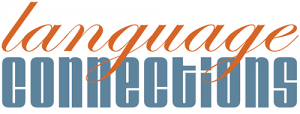An AI translator offers the hope of quick and scalable solutions for multilingual communication. While the healthcare industry is increasingly adopting these new technologies to improve efficiency, access, and communication, when patient safety and regulatory compliance are on the line, reliance on an AI translator without expert oversight can have serious repercussions.
Why Does An AI Translator Lag Behind in Medical Accuracy?
An AI translator relies on pattern recognition. While powered by advanced machine learning translation and neural machine translation algorithms, AI programs are more than likely to break down when reading medical jargon, dosage, and contextual nuance.
A recent study found that common medical discharge information was mistranslated 8% of the time for Spanish, and 19% for other languages by Google Translate. A mistranslation of even a symptom, diagnosis, or treatment can lead to severe medical repercussions or liability. This doesn’t mean AI translation has no place in healthcare, it means it must be deployed with guardrails and human review.
A Human vs. An AI Translator In Clinical Settings
In the world of healthcare translation services, the human vs machine translation argument can be quite literally a matter of life and death. Machine translation software, though adequate for everyday communication, can’t handle the translation of patient records, consent forms, or discharge instructions.
A systematic review concluded that machine translation error rates in healthcare were currently “unacceptable for actual use”. Computerized translation clearly does not produce the same results as human translation, which takes tone, emotion, and context into consideration. However, combining AI translation with human expertise can reduce turnaround time without compromising quality.
The Compliance Risk of Relying on an AI Translator in Healthcare
Healthcare is probably the most regulated industry globally. From HIPAA in the United States to GDPR in Europe, data accuracy and privacy are assumed.The use of an AI translator depends on expert validation, which means that the specter of non-compliance looms.
Most AI translation sites are not built with regulations in mind, thus exposing providers to liability or reputation risk. A hybrid model using AI for translation paired with human oversight can help healthcare organizations meet compliance while scaling multilingual communication.
The Cost of Machine Translation Automation
Machine translation services appear to cost less on paper, cutting back on the use of human linguists and making processes easier. While this can true in some situations, when AI-powered translation causes confusion or incorrect patient care, the cost of legal action, corrective treatment, or regulatory penalties can significantly outweigh any initial savings.
A 2023 ACL study analyzing machine translations of discharge instructions found that clinically harmful errors were documented even in widely-used MT systems. The true cost, therefore, is not always apparent upfront.
The Role of Post-Editing in Healthcare Translation
Seeking a balance between automation and security through the use of a machine translation post editing service is imperative. While better than raw AI output, the effectiveness of this approach depends on the skill level of the reviewer. In the healthcare field, only professional linguists with healthcare experience can ensure that final content is not only accurate but also safe. Automatic translation software simply is not adequate by itself, but plays a valuable role when integrated thoughtfully into the process.
Conclusion
An AI translator can offer incredible speed and convenience, yet in healthcare, nothing matters more than precision. Errors produced by AI in medical records can injure patients and expose institutions to compliance issues. To deliver safe, reliable multilingual care, providers must prioritize professional human translation and localization services and use AI only under expert oversight.
Want to explore how AI translation can support your healthcare organization without putting safety or compliance at risk? Let’s design the right workflow for your needs.
Language Connections Inc.
22 Goddard Circle
Brookline, MA 02445
Phone: +1-617-731-3510
Email: service@languageconnections.com


